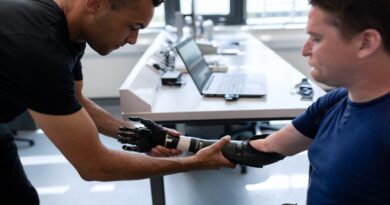Career Opportunities in Toy and Game Design
It’s funny how young people can’t wait to grow up, but those of us who have lived a little wish only for the days when we didn’t have all the responsibilities and burdens of adulthood. Of course, hindsight is 20/20, we live and learn, and all that junk. But the truth is that plenty of adults find ways to relive their youth. Some borrow clothing from their teenagers while others persist in going to night clubs even though they’re well past the age of being carded (when bouncers and bartenders stop asking you know the jig is up).
Contents
- 1 Career in Toy & Game Design
- 2 Toy and Game Design
- 3 How to Become a Toy Designer
- 4 Toy and Game Designers Job Description
- 5 Career Opportunities in Toy and Game Design
- 6 What is Toy & Game Design?
- 7 Top Career Paths in Toy & Game Design
- 8 Toy Designer
- 9 Game Designer (Digital & Physical)
- 10 Character Designer / Concept Artist
- 11 Product Developer / Engineer
- 12 Board Game Developer / Publisher
- 13 UX/UI Designer for Digital Games
- 14 Educational Toy/Game Designer
- 15 Key Skills to Succeed
- 16 Relevant Courses / Degrees
- 17 Where to Look for Jobs
- 18 Industry Trends
- 19 Bonus: How to Get Started?
- 20 India’s toy story – Unboxing fun and beyond – KPMG LLP
- 21 Active Learning Through Toy Design and Development
- 22 Career Opportunities in Toy and Game Design
- 23 Toy jobs: Work in the business of play
Career in Toy & Game Design
On the other hand, you might choose your childhood dream job as a way to keep that youthful sparkle in your eye. By taking on a career that involves making toys or games you could keep your finger on the pulse of a younger generation and retain a childlike mindset. Best of all, you can virtually get paid to play all day. Think Tom Hanks in ‘Big’. However, you’ll have to start by seeking out career opportunities in toy and game design.
Toy and Game Design
As it turns out, there are all kinds of positions available to those seeking employment in the toy and game industry. Like any kind of business, companies that make toys and games have departments responsible for planning, production, distribution, sales, marketing, accounting, legal, and so on. But if you’re interested in design you’ll probably want to get into the production aspect of the industry. This may or may not require a specific education, but you’ll find that it can be difficult to get a foot in the door without a degree under your belt, even for low-level positions. So depending on what you’re interested in, it behooves you to earn a diploma before you start seeking jobs.
How to Become a Toy Designer
But what types of degree programs will benefit you? That depends entirely on the career opportunities you’re seeking. If, for example, you want to be part of the planning process to create new toys or games, a background in fine arts may be your ticket, although in this case you might want to put together a portfolio, as well. Your talents with artistic design will only serve you if you can show people what you’re capable of. It terms of toys, you could also fabricate products from the designs of others, and when it comes to games, story writers and engineers play integral roles in taking products from concept to consumer market.
Toy and Game Designers Job Description
The only problem is that this industry is somewhat insular. So unless you know someone it can definitely be hard to break in, even with a decent education on your resume. You don’t necessarily have to create a product and get listed on in order to get noticed (although it certainly couldn’t hurt), but if you can find a way to add some experience to your resume, say through an internship or by developing your own toys or games, you can definitely improve your odds of getting hired and starting your career. And with sites like Etsy to sell your toys on or the ability to post mobile games on the iTunes store (thanks to a $99 app developers license) you should be able to build up your resume, open doors, and get your career in toy or game design underway.
Absolutely! The toy and game design industry is booming, especially with rising interest in creativity-driven education, interactive entertainment, and nostalgic play among adults. If you’re imaginative, love storytelling, design, or engineering — this could be a super exciting career path.
Career Opportunities in Toy and Game Design
What is Toy & Game Design?
It’s the art and science of creating play experiences — toys, board games, video games, learning tools, and more. It blends design thinking, psychology, storytelling, and engineering.
Top Career Paths in Toy & Game Design
Toy Designer
-
Creates physical toys for children and adults
-
Works with materials, mechanics, safety regulations, and aesthetics
Skills Needed: Sketching, 3D modeling (like CAD), material knowledge
Workplaces: Toy companies (e.g., Mattel, Hasbro), startups, freelancers
Game Designer (Digital & Physical)
-
Designs rules, gameplay mechanics, storylines, and user experience
-
Can specialize in video games or board games
Skills Needed: Game engines (Unity/Unreal), storytelling, UX, systems thinking
Workplaces: Game studios, indie game teams, self-publishing
Character Designer / Concept Artist
-
Creates characters, environments, and visual assets
-
Works closely with animators and 3D modelers
Skills Needed: Digital painting, anatomy, Photoshop, Blender
Workplaces: Animation studios, game companies, freelance work
Product Developer / Engineer
-
Transforms toy ideas into manufacturable products
-
Deals with mechanics, prototyping, safety, cost-efficiency
Skills Needed: Mechanical engineering, 3D printing, CAD, prototyping
Workplaces: Toy manufacturing companies, R&D departments
Board Game Developer / Publisher
-
Specializes in strategy games, card games, or educational games
-
Often collaborates with illustrators and playtesters
Skills Needed: Game logic, creative writing, market analysis
Bonus: You can self-publish via platforms like Kickstarter!
UX/UI Designer for Digital Games
-
Focuses on user interface and player interaction
-
Ensures smooth gameplay and visual clarity
Skills Needed: Figma, wireframing, user testing, design systems
Workplaces: Game dev teams, app companies
Educational Toy/Game Designer
-
Creates games or toys focused on learning (STEM, language, logic)
-
Often works with child psychologists or curriculum developers
Skills Needed: Pedagogical knowledge, design thinking
Employers: EdTech firms, NGOs, toy brands
Key Skills to Succeed
-
Creativity & storytelling
-
Drawing / 3D modeling
-
Game theory & logic
-
User experience (UX) design
-
Prototyping & testing
-
Collaboration & communication
Relevant Courses / Degrees
-
Bachelor’s in Toy Design / Industrial Design
-
Game Design / Animation / Graphic Design
-
Online certifications (Coursera, Udemy, Skillshare)
-
Short-term game jams or hackathons for real-world exposure
Where to Look for Jobs
-
Companies: Hasbro, LEGO, Funskool, Ravensburger, Nintendo, Ubisoft
-
Websites:
-
Behance (for portfolios)
-
ArtStation
-
Gamasutra / GameDev Jobs
-
LinkedIn + Indie boards (Itch.io, BoardGameGeek)
-
Industry Trends
-
Sustainable Toys (eco-friendly materials)
-
AR/VR integration in toys & games
-
STEAM-focused play
-
AI-driven games & NPCs
-
Adult collectible & strategy game market
Bonus: How to Get Started?
-
Start by sketching or prototyping ideas at home
-
Join a toy/game jam
-
Volunteer with a board game community or local maker space
-
Make a mini-game in Unity or a card game with friends
-
Post your ideas on Instagram or Behance
Would you like a roadmap or resources to get started in toy/game design, like free tools, books, or a custom plan based on your background?


